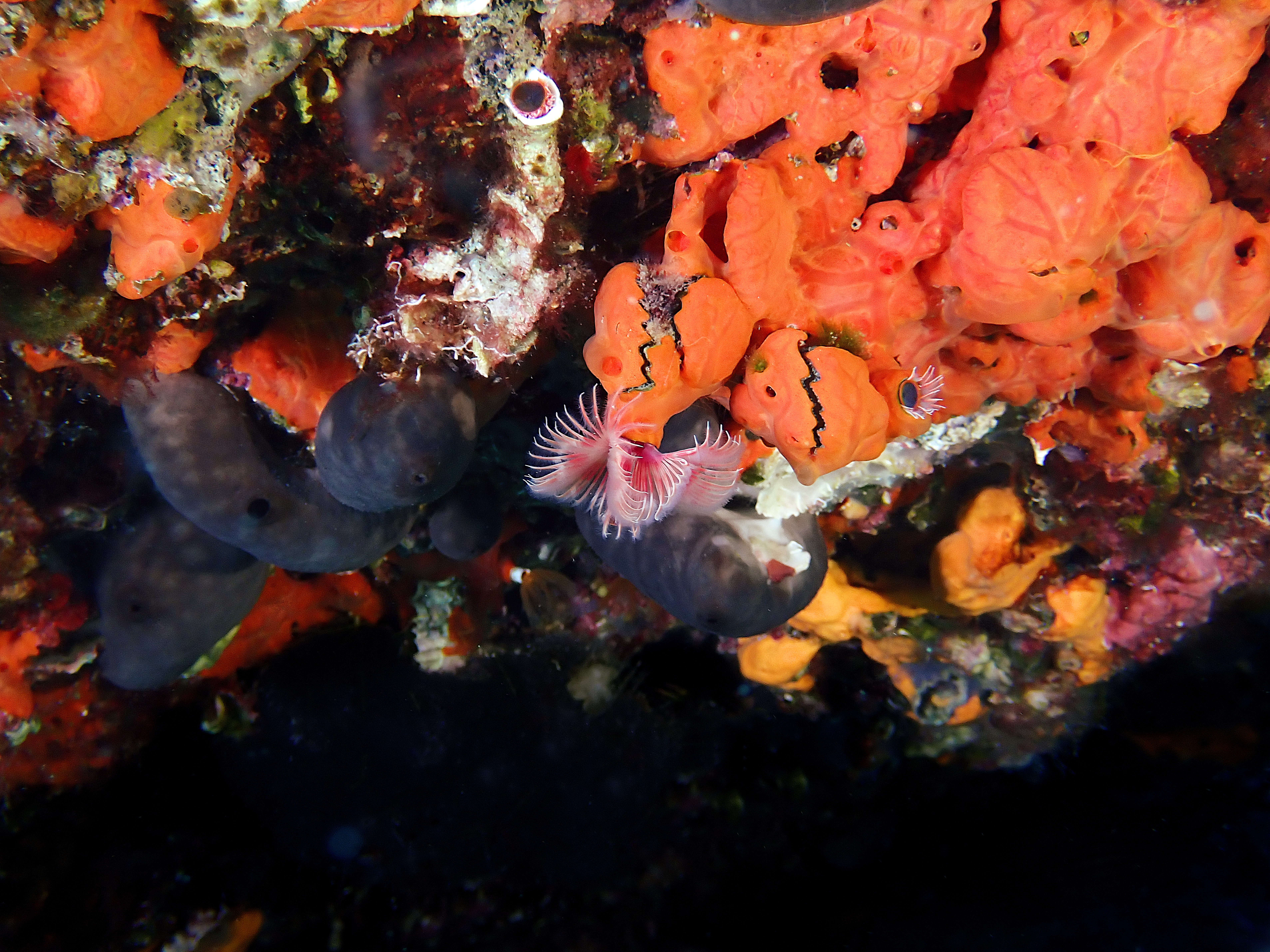> [!summary]- Classification
**Kingdom**:: [Animalia](Animalia.md)
**Phylum**:: [Annelida](Annelida.md)
**Subphylum**::
**Superclass**::
**Class**:: Polychaeta
**Subclass**:: Sedentaria
**Superorder**::
**Order**:: Sabellida
**Suborder**::
**Superfamily**::
**Family**:: Sabellidae
**Subfamily**::
**Genus**:: Serpula
**Species**:: S. vermicularis
**Vernacular**:: Red tubicolous worm
## Photos

*[124 - 2023-05-15 - L'Aquarium II - Epidaurus - Greece](124%20-%202023-05-15%20-%20L'Aquarium%20II%20-%20Epidaurus%20-%20Greece.md) - I like this picture because the sponge looks like dinosaure faces. It's maybe because there's a crustacean ([Arca noae](https://doris.ffessm.fr/Especes/Arca-noae-Arche-de-Noe-118)) that let the sponge cover its shell to hide it. What's interesting here, is that, in the middle we have the individual out, and its right, on the sponge, we have another individual, retracted in the tube, and close with it operculum. The same for the hole above our main animal, near the frame. The sponge ([Crambe crambe - Orange-red encrusting sponge](Crambe%20crambe%20-%20Orange-red%20encrusting%20sponge.md)) even colonized the tube, protecting the worm, as it take advantage of the current make by the sponge to get food. The black sponge is [Spongia officinalis - Greek bathing sponge](Spongia%20officinalis%20-%20Greek%20bathing%20sponge.md)*.
## Notes
Sensitive to current, just like other fanworms. But if we look carefuly, we can sometimes see their operculum out, on the end of the fan.
## References
- https://doris.ffessm.fr/Especes/Serpula-vermicularis-Serpule-1425/(rOffset)/3